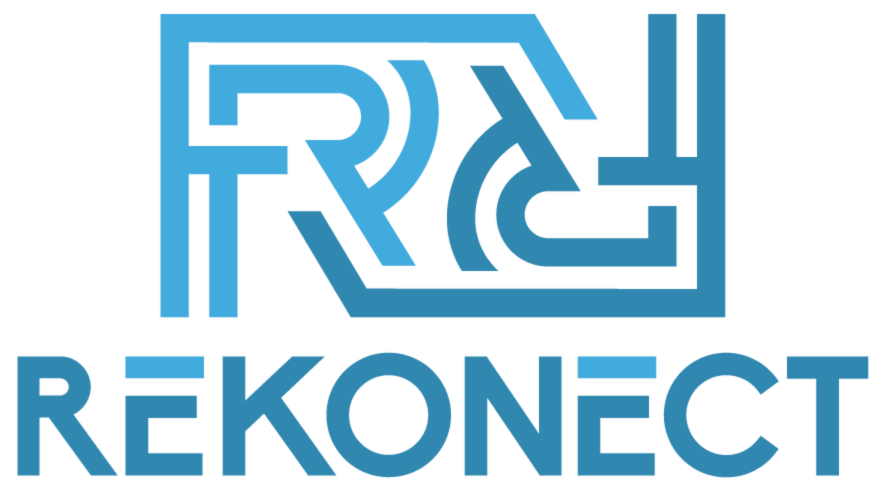A well-crafted mission statement is one of the most critical building blocks for any nonprofit organization. It serves as the cornerstone for setting objectives, guiding strategic decisions, motivating your team, and connecting with donors.
Defining your organization’s mission and vision statements is crucial. It’s an empowering step in your journey, as our previous in-depth guide explains. A step that we’ll now delve deeper into.
Mission Statements, Purpose Given Form
Before we dive into the specific steps, it’s important to understand the true purpose of a mission statement and why it’s crucial for your organization’s well-being. Forbes actually published a fascinating deep-dive into missions, visions, and values. While it mainly talks about businesses, the article neatly explains the impact of this oft-overlooked aspect of any organization.
To that end, think of your mission statement as a beacon. It illuminates your nonprofit’s reason for being and points to the future that you envision creating. Here’s why you need to get it right:
- Clarity of Purpose
A strong mission statement cuts through the noise and plainly states what your nonprofit does. This clarity helps everyone—from your volunteers and staff to potential donors—see where you’re heading and how you plan to get there. - Donor and Stakeholder Engagement
In a world where attention is scarce, a concise and compelling mission statement grabs people’s interest. It also helps donors decide if your goals align with their passions. If your statement is nebulous or loaded with jargon, potential supporters might lose interest before even reaching out. - Staff and Volunteer Motivation
People want to feel that their efforts contribute to something larger. A resonant, inspiring mission statement reminds everyone on your team why they do what they do. It helps attract like-minded individuals and gives them a clear sense of purpose. - Decision-Making and Strategy
When faced with tough choices—like which programs to focus on or how to allocate limited funds—your mission statement acts as a touchstone. If an initiative doesn’t align with your stated mission, it’s easier to either adjust the plan or walk away. - Public Image and Credibility
A well-structured mission statement positions your organization as one that’s intentional and trustworthy. A vague or overly broad mission can cause confusion and raise doubts about your nonprofit’s direction and leadership.
Examples of Nonprofits With Impactful Mission Statements
To see how a mission statement can spark interest and action, let’s look at a couple of examples from well-known organizations:
- The Hunger Project: “Our mission is to facilitate individual and collective action to transform the systems of inequity that create hunger and cause it to persist.”
In fewer than 24 words, they articulate exactly who they serve, what they do, and how they do it—through a nationwide network and a call to action against hunger. - Habitat for Humanity: “Seeking to put God’s love into action, Habitat for Humanity brings people together to build homes, communities and hope.”
Short, inclusive, and inspiring, this statement clearly highlights their mission of building homes to create a better life for communities in need.
In both cases, the mission statements offer clarity and direction while also tapping into human empathy. They remind staff, volunteers, and donors what the end goal is—and why it matters.
Step 1: Define Your Purpose
What Problem Are You Solving, and Who Do You Serve?
The first step to writing a powerful mission statement is to clarify your nonprofit’s essential purpose. After all, you can’t articulate your mission if you don’t know exactly what you’re trying to achieve. Here are some key questions to guide you:
- Why does your nonprofit exist?
Is there a gap in services? A community need that’s going unmet? Make sure you can explain the problem in a way that resonates with people outside your immediate circle. - Who specifically benefits from your work?
Identify the population (or cause) you serve. Is it at-risk youth in a specific city? Is it environmental conservation worldwide? The clearer you are about your beneficiaries, the more compelling your mission statement will be. - How do you aim to solve this problem?
Do you provide direct services, advocate for policy changes, or raise awareness? You don’t need to go into every detail in the mission statement, but you do need to capture your main approach.
Exercise: Answer the “Why, Who, and How” Questions
Take a piece of paper (or open a blank document) and quickly jot down your answers to the following prompts:
- Why does our organization exist?
- Who benefits from our work?
- How do we address their needs or solve their problem?
Then, read over your answers and see if there’s a unifying theme or phrase that jumps out. This will be the foundation of your mission statement. If you’re stuck, consult with team members or stakeholders who can share insights and perspectives on your core purpose.
Step 2: Keep It Concise
Tips for Writing a Mission Statement Under 50 Words
Brevity is power. The best mission statements boil down complex concepts into straightforward messages that can be easily remembered and repeated. While there’s no hard rule on length, aiming for under 50 words is a good benchmark. Here’s why:
- Memory and Resonance: People are far more likely to remember your mission statement if it’s short. If they can’t remember it, they can’t share it effectively, whether in conversations or on social media.
- Clarity: Short statements force you to cut extraneous detail and jargon. This ensures your mission is easy to understand.
- Promotional Use: You’ll use your mission statement in brochures, on your website, in grant applications, and even in your email signature. The more concise it is, the more adaptable it will be to multiple formats.
Example: Compare Long and Short Versions of the Same Mission
Let’s imagine a nonprofit that supports senior citizens by providing companionship and resources in the local community. Here’s a longer version of their mission statement:
“Our organization is dedicated to assisting senior citizens, specifically those who live alone, by providing a wide variety of resources—such as home visits, meal deliveries, technology training sessions, and mental health support groups—across the entire city, ensuring that older adults do not feel isolated or neglected.”
While informative, this statement is fairly long and detailed. Now, let’s boil it down:
“We empower isolated seniors in our city by delivering the companionship and resources they need to live with dignity and connection.”
In 20 words, the revised mission statement maintains the core message—empowering seniors, focusing on companionship and resources—without extra filler. It’s easy to read, easy to remember, and still potent.
Step 3: Make It Inspirational
Balance Inspiration With Practicality
An excellent mission statement should stir the emotions of the reader, reminding them of the importance of your cause. Yet it should also reflect reality, ensuring your mission is something tangible. Striking that balance between hope and action is key. If you go too far into grandiose statements without specifics, you risk sounding empty. On the other hand, a mission statement that’s all practicality might fail to capture hearts and minds.
Use Action Words and Focus on Impact
Action-oriented language prompts people to visualize progress and results. Instead of saying, “We exist to help…” try using words like “empower,” “transform,” or “create.” Here are some examples of inspiring, action-centric mission statement language:
- “We transform the lives of …”
- “We ignite change in …”
- “We champion the rights of …”
- “We elevate opportunities for …”
This choice of wording nudges people to see the direct impact your nonprofit is making. When writing your own statement, make sure you’re focusing on the difference your organization makes in people’s lives or in the world around you.
Step 4: Test Your Statement
Share It With Stakeholders for Feedback
By the time you’ve arrived at a draft mission statement, you’ve likely spent a good deal of time and mental energy refining it. Now it’s time to test it in the real world. Share it with various stakeholders—board members, staff, volunteers, donors, and even beneficiaries if appropriate. Ask them for honest feedback, such as:
- Is the statement clear at first glance?
- Does it speak to the core of what we do?
- How does it make you feel about the organization’s work?
- Is there any jargon or unclear phrasing?
Take this feedback to heart, but remember: not all feedback is created equal. You may hear multiple opinions that conflict. Use your judgment to keep changes that enhance clarity and authenticity while staying true to your original purpose.
Evaluate Its Clarity and Alignment With Your Goals
Ask yourself these questions as you refine the statement:
- Clarity: Does someone with no prior knowledge of our organization understand what we do after reading it once?
- Simplicity: Have we used everyday language instead of buzzwords or industry jargon?
- Relevance: Does the statement reflect our most pressing goals and key activities?
- Longevity: Is our mission broad enough to remain relevant for years to come, yet specific enough to give direction?
- Measurability: Can we point to tangible indicators of progress that show we’re fulfilling this mission?
Once you’re satisfied with the answers, you’re well on your way to having a mission statement that truly embodies your nonprofit’s purpose and direction.
Explore Rekonect’s Resources for Nonprofit Planning
Crafting a mission statement is often the first step in establishing a robust organizational strategy for your nonprofit. But it doesn’t end there. Having access to resources, information, and tools that cater to nonprofits would make this task significantly easier.
Here’s where Rekonect can step in to support you on the journey via the following:
- Resource Directory: Access hundreds of useful online platforms, software options, and digital libraries chosen specifically for nonprofit growth and success. You’ll find insights on setting goals, engaging donors, and measuring impact—vital steps once you have a clear mission in place.
- Professional Support: Connect with nonprofit experts who can turn your nonprofit mission and vision into reality.
- Free Nonprofit Starter Guide: Crafting a compelling mission statement is just one part of starting a nonprofit. Rekonect can provide you with a guide that contains everything you need to get your organization off the ground. The best part? It’s completely free!
Ready to Get Started?
A mission statement might be only a sentence or two, but it contains the core of your nonprofit’s identity—why you do what you do, who you help, and how you plan to achieve it. By putting thought into refining it, you lay a sturdy foundation upon which to build strategic plans, fundraising campaigns, and volunteer programs. You align everyone in your organization—staff, volunteers, board members, and donors—around the same rallying cry. That alignment breeds momentum, fosters collaboration, and helps people see exactly how their efforts support the greater good.
Moreover, when donors see a clear and powerful mission statement, they’re more likely to give, knowing exactly where their money is going. Volunteers are likelier to join your cause, excited that your focus and goals match their aspirations. Communities are more apt to trust you, understanding that your mission ties directly into tangible results.Have more questions about crafting mission statements?
Need additional guidance in starting your nonprofit? Contact Rekonect today and get in touch with our experts.

